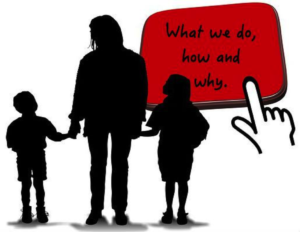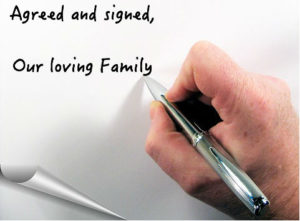RAGE 4 TAKING ON RAGE: PREPARE A PLAN
RAGE 4 TAKING ON RAGE: PREPARE A PLAN

Rage tends to make family members feel hopeless and out of control. We began our discussion in Neurologically Gifted’s article, Rage 1: About Rage. Preparing a plan to deal with rage in the home puts an end to those feelings of hopelessness. With a predetermined plan, you will have responses and strategies that you and your family can rely on. You will now have something you can do about it.
When preparing to take on rage in our home, we stepped back to observe carefully what was happening. We watched for triggers for our son’s rage, how it occurred, and how we responded. In doing so, we were able to uncover our own (ineffective) default behaviours. (See Neurologically Gifted’s Article: Rage 2: Look, Listen and Focus) Once we had identified the behaviours in our family (rage, triggers and responses), we sat down with our son to discuss those patterns. We openly and honestly discussed our feelings. With care and support, we helped our son explore what he felt before, during and after a rage episode. We made it clear to him that this was a family problem and that as a family we could find solutions and improve our situation. (See Neurologically Gifted’s Article: Rage 3: Talk About Rage) With this critical step completed, it was time to for us to make a family plan to get control over rage in our home.
Make House Rules

Make rules with your child. Ask them what rules they think should be included. Prompt them by letting them know that the rules will apply to everyone in the family. Ask them how they would NOT want to be treated by others. Ask if there are things they would like to change by making a rule. Discuss with your child why the rule is important and the natural consequences of non-compliance to the rule.
Guide your child through the rule making process. Keep rules simple and concise for easy recall.
Do not over-burden the process with too many rules. Choose your battles, picking only rules that apply to your greatest challenges. Over time, your child will become better able to self-regulate their emotions and responses. As your family begins to experience progress, you will be able to change your focus and rules to address other priorities.
Keep rules obtainable and focus on safety. For example, a rule prohibiting swearing is not realistic for a child with coprolalia. A rule prohibiting anger or frustration isn’t appropriate either as we all have feelings. In such a case, the family rule could outline acceptable ways (and places) to express anger and frustration. You want your child to be successful, gain confidence and learn to apply skills for managing their emotions throughout this process.
Keep copies close by for quick reference. Having the rules posted in their personal space will allow the child time to review expected behaviours and natural consequences of prior behaviours. In our home, we placed a copy in our son’s bedroom, and referred to them at bedtime when we debriefed the day’s successes and challenges.
When referring to the rules: Give kind and gentle reminders. Reminders could include what the family (including the child) agreed would promote a safer and more peaceful environment. Referencing the rules on paper takes the blame/authority away from the offender/enforcer and places it on the family rules. A child is less likely to express anger towards a predetermined rule, rather than to being told to stop what they are doing by a parent. Avoid trying to catch your child breaking the rules or to use the rules in a punitive manner. You are attempting to use the rules to guide them in a predetermined way to modify/control their rage, not to punish them.
RAGE 4 TAKING ON RAGE: PREPARE A PLAN
The Plan

Make a plan for what will happen when the child (or any other family member), is unable to comply with the rules. The rules clearly set out the expectations for behaviour and the plan will clearly state the consequences that will follow non-compliance. Consequences must be consistent, fair, logical and natural. For example, if a child is acting in a threatening manner, they must go to their room, (or other predetermined safe area) so the family members will be kept safe.
Again, involve your child in this discussion and try to have them help to come up with ideas for helping them regulate their own behaviour. We found that our son had great ideas for how we could help him regain control, or how we could take control for him when he was unable. When you are making the plan with your child, try to put yourselves in the moment. Ask your child, “What would you do if this happened?” “What do you think you would do next?” “How could we help you in this step of the rage?” Our son was excellent at imagining the scenarios for us.
The plan should consist of step-by-step interventions with increasing increments of taking control for your child. Each step will provide your child with an opportunity to succeed in regaining control. For example, our first step was a friendly reminder about the undesired behaviour using positive language. (see Neurologically Gifted’s article: Using Positive Language for Success) “You need to speak in a calm and kind way to everyone in our family.” If the child cannot regain control with the reminder, then the next step of the plan would be used and so on. Our next step was to ask our son to remove himself from the situation. This allowed him an opportunity to be successful by being able to continue his behaviour but doing it someplace else. The final step of the plan would be used only if the child, given each opportunity, could not regain control by themselves. In the last step the parent would take control for the child. “Nathan, if you cannot take yourself to your room to calm down (and be safe), I will need to take you there.” Remember: This is for helping, not punishing. It is done with care not anger.
Our Plan for Rage
With our help, our son guided us through what the steps of the plan would be. First we would give a friendly warning using positive language. Next, we offered a suggestion to leave the room and take some space. If necessary, the next step would be the instruction to go to his room. The toughest part of our original plan would be getting him to his room. At this point he told us we would need to take him to his room if he didn’t go on his own. I’m fortunate that as a special education teacher who specializes in challenging behaviours, I have training in using physical restraint. I DO NOT recommend anyone restrain a child without training. The training not only teaches you to calm your child (to prevent the need for restraint), it also teaches you to stay calm in the face of calamity as well. It’s important to understand how and when to restrain someone who is in a fit of rage. In addition, it teaches you how to safely restrain without causing injury to the child. It is far too easy for a grown up to use their strength advantage over a child, and injure them. It also helps you stay in emotional control, preventing you from acting out of anger. So, in our case, I would physically take him to his room. We also discussed a plan for when only his mom was home and he needed to be physically taken to his room. In this case, we made it clear that for safety, mom would need to call for help – even if that meant calling 911. He also suggested that he might not stay in his room, so we problem solved for a lock on his door to keep him inside. Together we made a trip to the police station to discuss our plan of helping our son regain control, to stay safe, and to keep our family safe. Involving him in every part of the plan was essential. Together we set his room up so that upon entering the room, there were comforting items within his sight. We removed everything that could be dangerous. We provided soft balls for throwing and devoted a drawer in his dresser for calming stress-reducing toys. With those calming toys, we discussed how Nathan could use these things to redirect his anger (like punching his pillow or mattress and hugging his stuffed toys).

By the end of making the plan, our son knew exactly what would be happening if he lost control to rage and that knowledge made him feel safe. Having a clear understanding of our process eliminated unpredictability, and made our son feel safer. We signed, witnessed and distributed copies throughout the house. Signing the rules together, we reinforced the commitment to a family effort to help keep our home safe.
For more on rage from Neurologically Gifted:
Rage 2: Look, Listen and Focus


